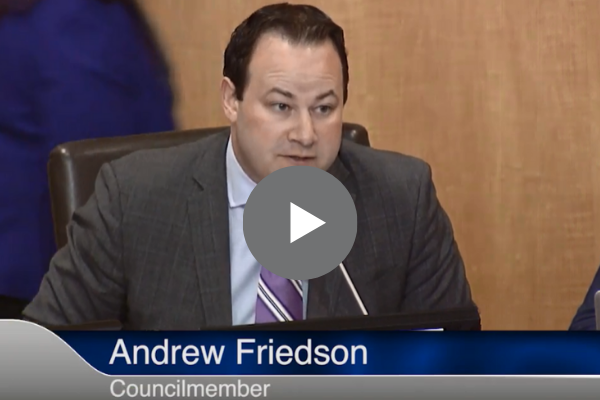|
It’s time to turn climate rhetoric into real action. As a resident engaged in how Montgomery County can address the climate crisis, it’s important you’re aware of legislation I introduced this week with Councilmember Hans Riemer that will significantly reduce carbon emissions from commercial buildings, a sector that accounted for more than a quarter of our county’s greenhouse gas emissions in the most recent survey.

Bill 10-20 would help commercial building owners make energy reductions with improvements to the County’s existing green building property tax credit recommended by a Department of Environmental Protection-led Stakeholder Work Group of environmental advocates, subject matter experts, property owner representatives, and public officials after a year of research, conversations, and meetings. The Stakeholder Work Group recommendations are ready to be put in place. We must not delay.
Bill 10-20 would make three major changes to ensure the property tax credits are being used for actual energy reductions and to expand the amount of energy reduction projects eligible for the program:
- For the first time, we would prioritize actual demonstrated energy reductions instead of LEED standards that can include improvements not directly tied to energy reduction. Commercial buildings must show energy reductions in order to be eligible for any property tax credit.
- The legislation will ensure that property tax credits are being awarded only to building owners that are going above and beyond what’s already required in the county’s building code. Under the existing program, building owners can get property tax credit for energy reduction work that is already required by the International Green Construction Code that was adopted in 2017. The legislation would also require the property tax credit eligibility standards to remain beyond what’s required in future iterations of building codes as the county constantly updates and strengthens these requirements.
- The current annual cap for property tax credits through this program has been reached in 2016, 2017, and 2018, effectively limiting other energy reduction projects from occurring. Bill 10-20 would keep the $5 million annual property tax credit cap for improvements to existing buildings but remove the cap for improvements to newly constructed buildings. This will allow for more new buildings to take part in the program while avoiding any revenue loss as all new buildings are adding to the county’s overall tax base.
Thank you for your support of reducing carbon emissions in our county and for reaching our ambitious but necessary climate change goals. If you have any questions about this legislation, please don’t hesitate to reach out to me. The public hearing on Bill 10-20 is tentatively scheduled for March 24, 2020 at 1:30 p.m.
Sincerely,

|